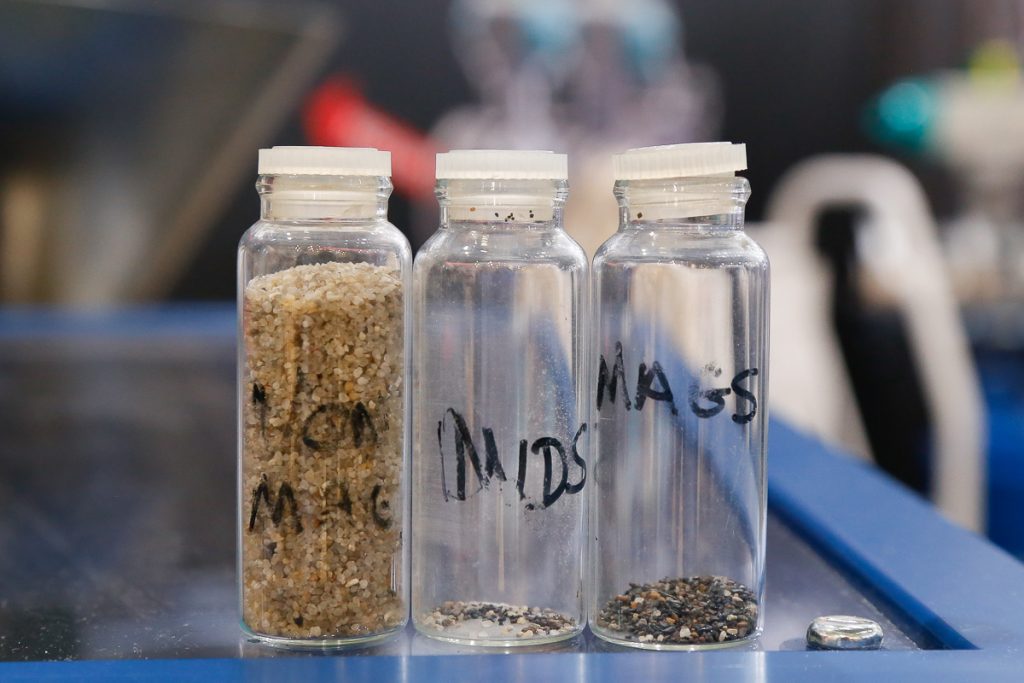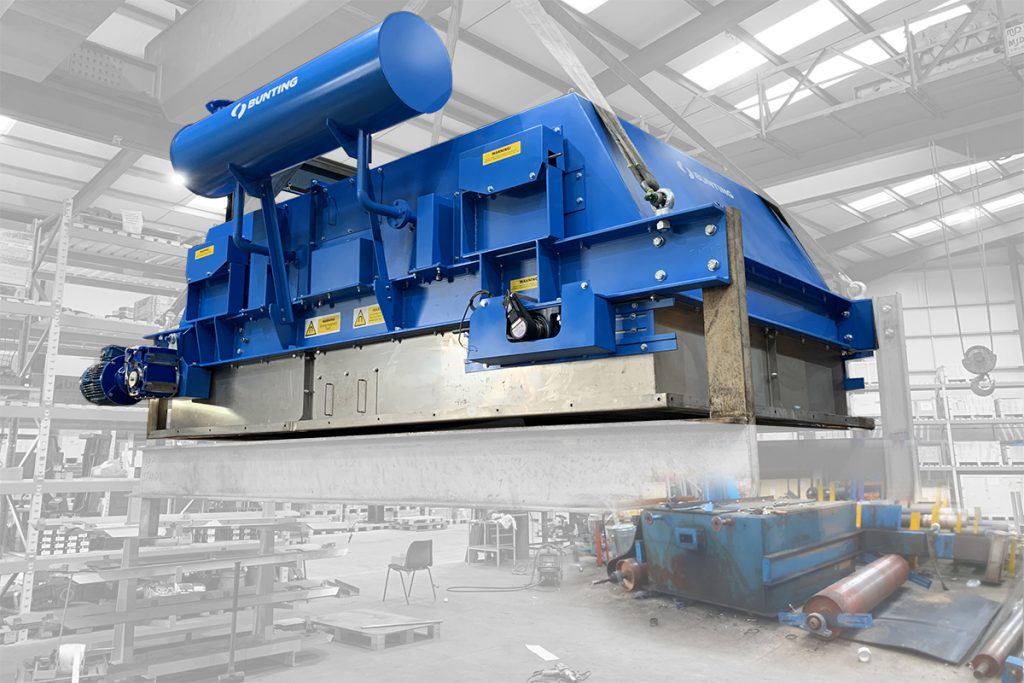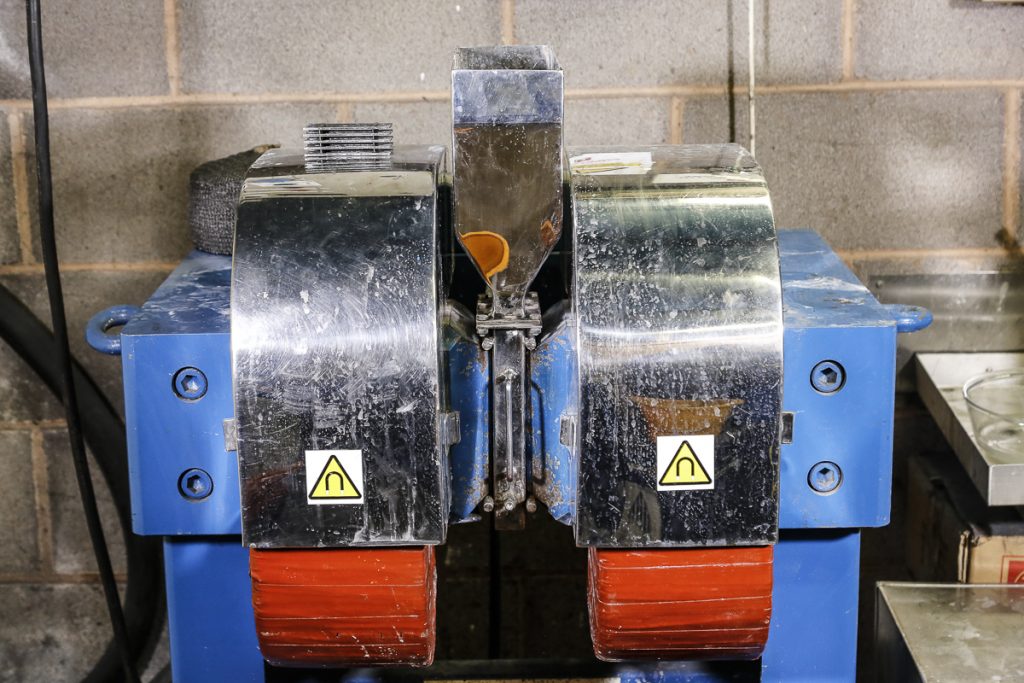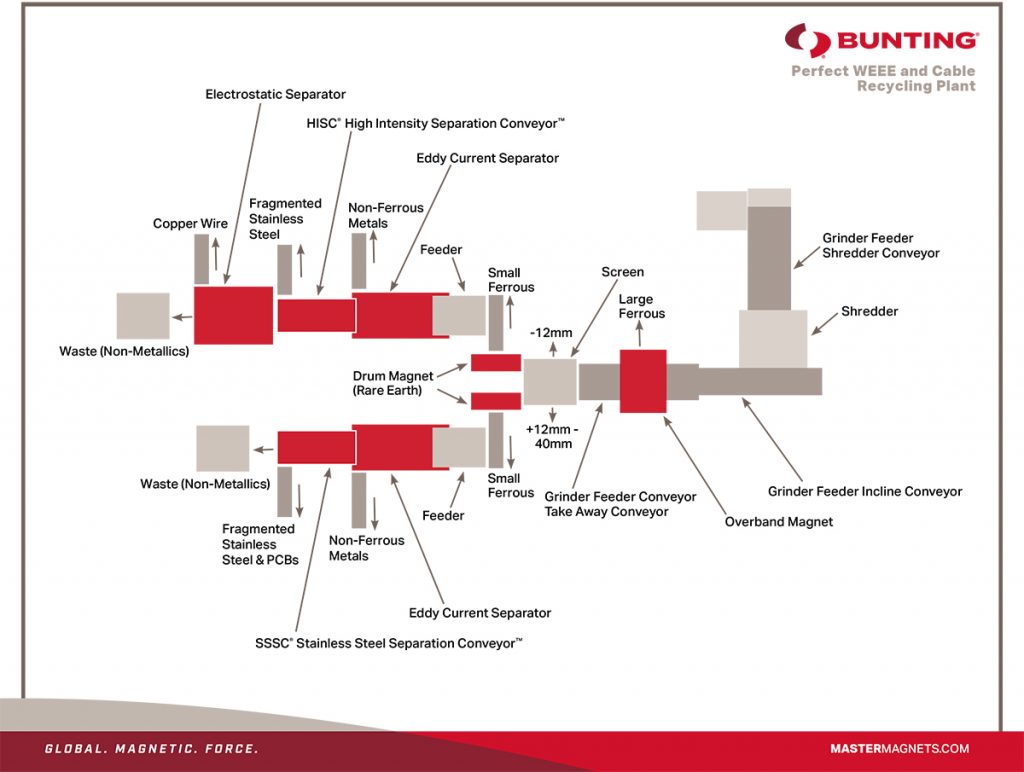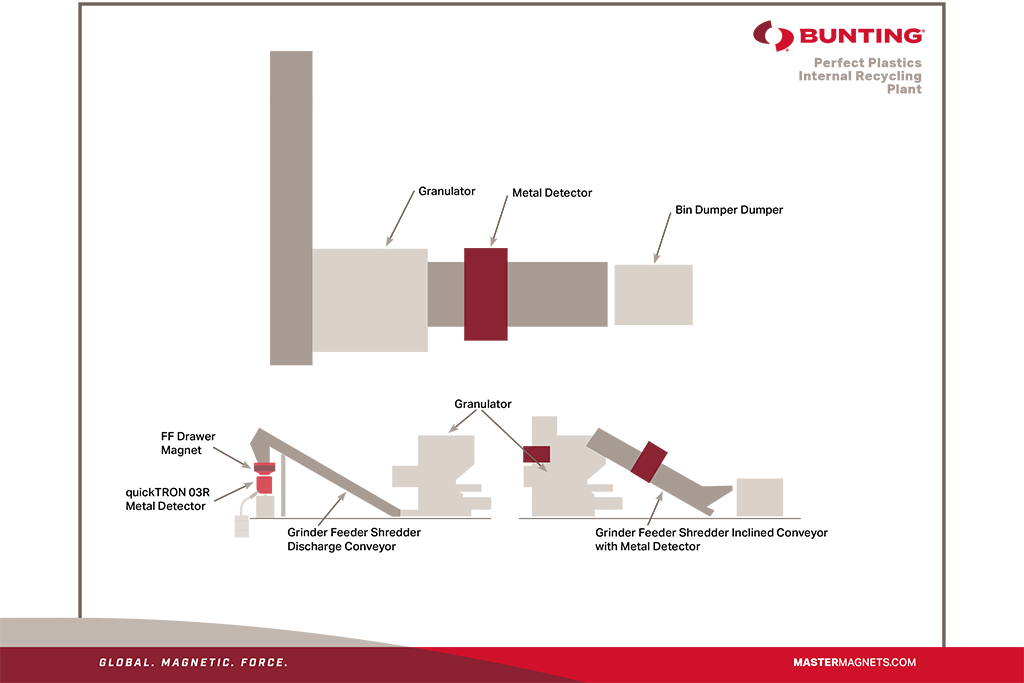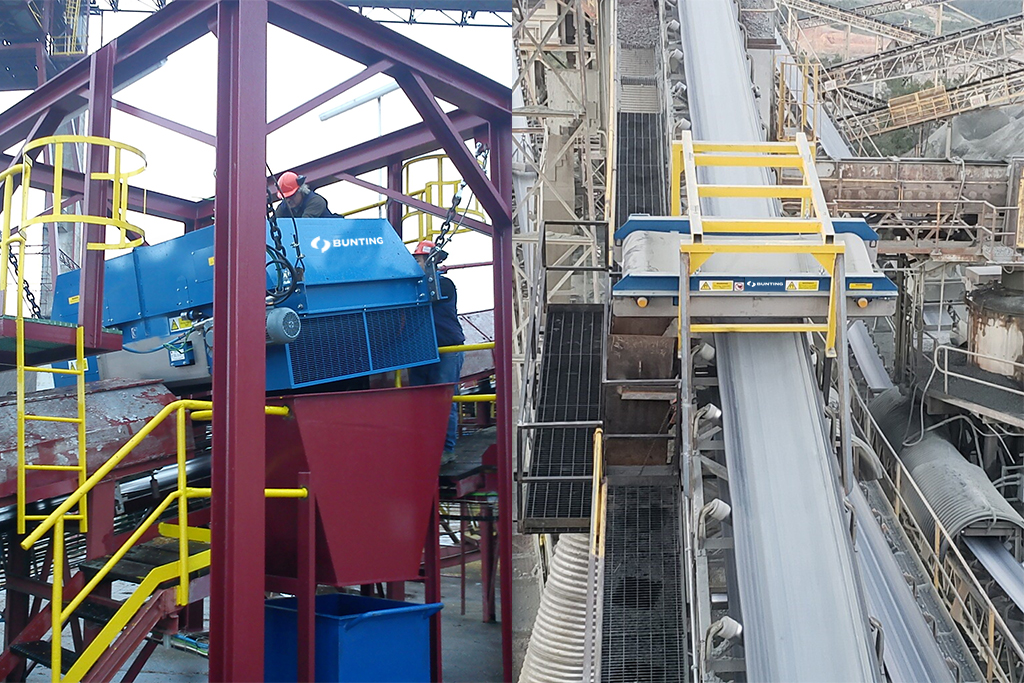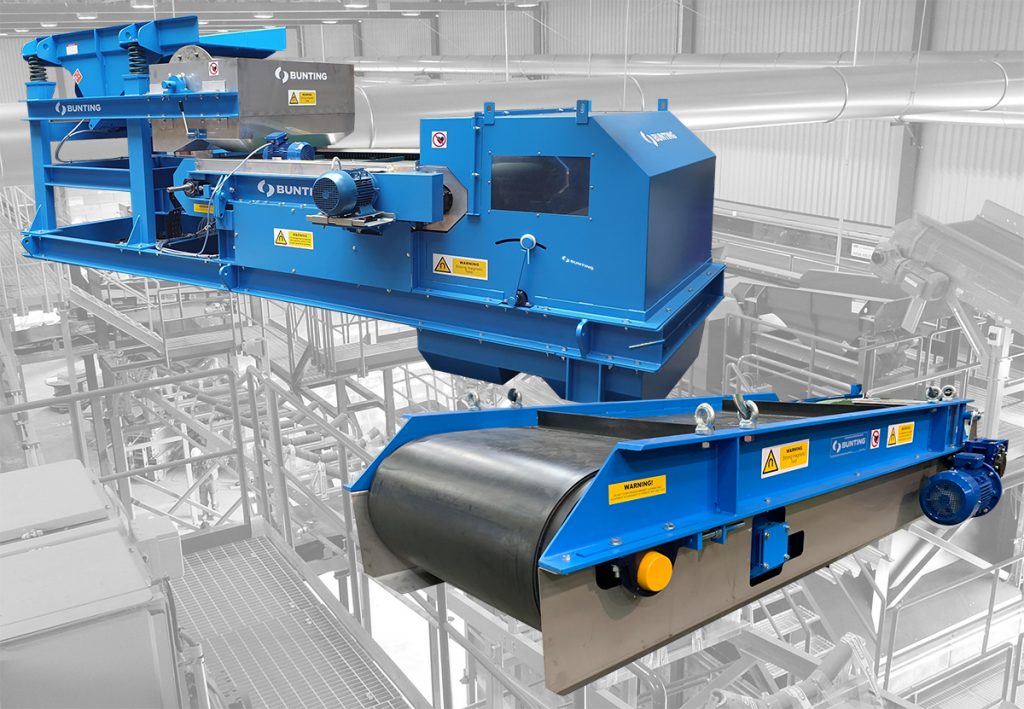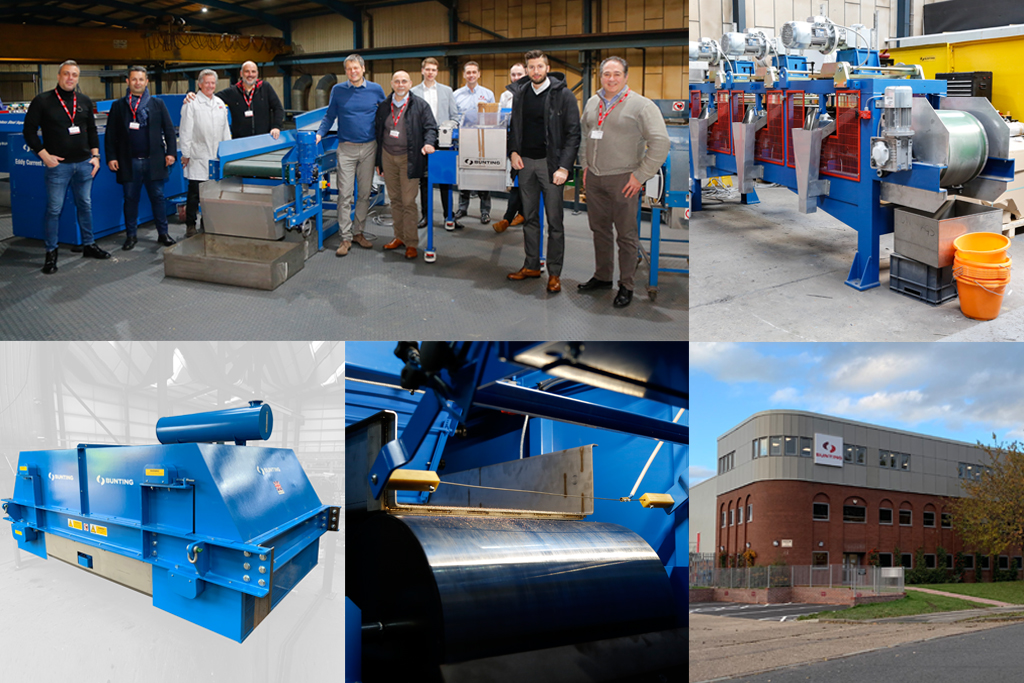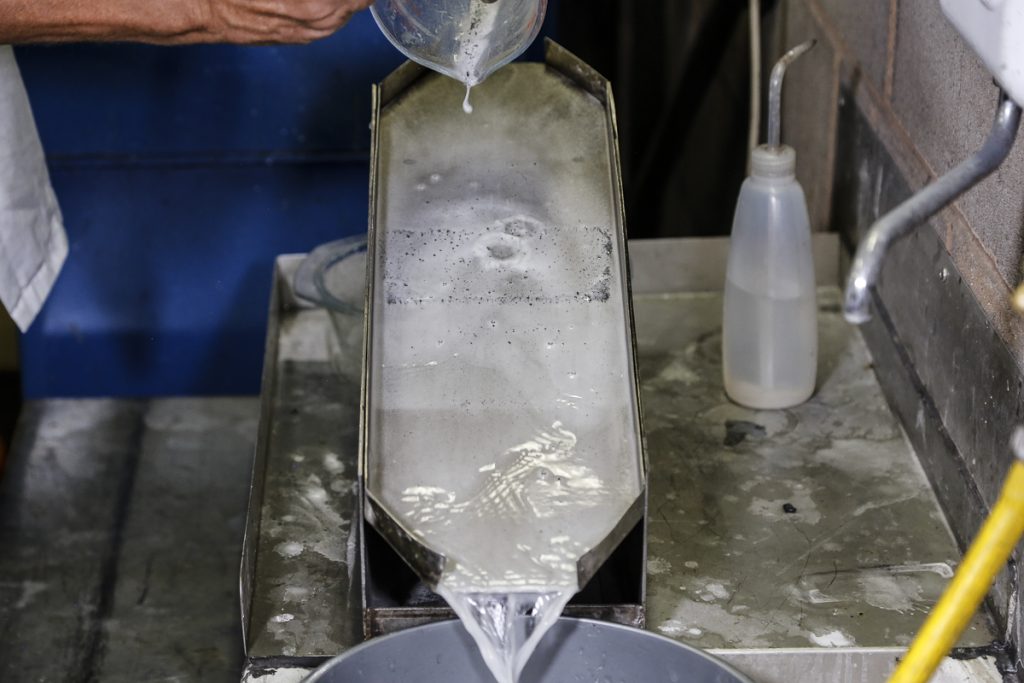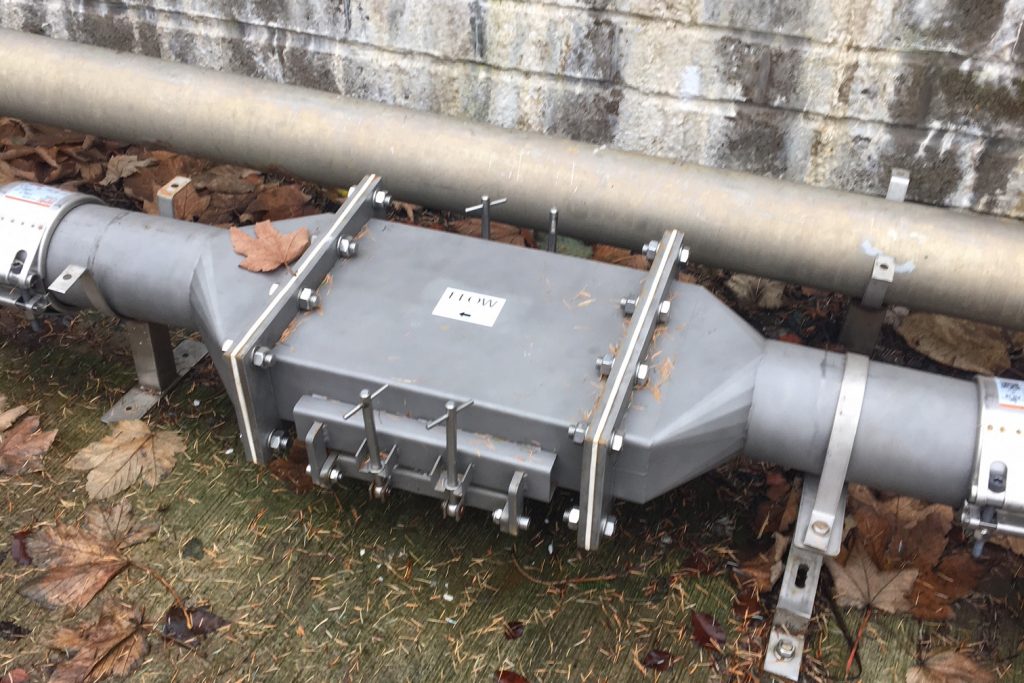News
Magnetic Properties of Ceramic Minerals
Magnetic minerals and fine iron have plagued ceramic producers since the first glazed pot was produced many thousands of years ago. Early ceramicists adopted elaborate and colourful patterns to cover any imperfections caused by such contamination. Over time, the demand for white or single coloured ceramic products increased, making disguising any imperfection increasingly difficult. Ceramic…
Read More6-Year-Old Electro Overband Magnet Refurbishment
Repair and refurbishment convert a well-used, functional magnetic separator into almost new, further extending the life of the equipment. One of Bunting’s latest repair and refurbishment projects involved a 6-year-old Electro Overband Magnet. The oil-cooled Electro Overband Magnet model 155 OCW 45 CB separates tramp ferrous metal from biomass pellets in a bulk handling terminal…
Read MoreWet High Intensity Magnetic Separation Testing
The electromagnetic laboratory-scale Wet High Intensity Magnetic Separator (WHIMS) removes fine magnetics and para-magnetics from mineral slurries. Handling minerals in a slurry or suspension is preferable for many processors, especially when beneficiation involves wet processing. Additionally, a wet process often produces a better separation for very fine materials. In this educational video, Professor Neil Rowson…
Read MoreMetal Recovery from WEEE and Cable
There is a wealth of valuable metals present in WEEE (Waste of Electrical and Electronic Equipment) and cables. However, the recovery is often difficult due to the small particle size range and variable nature of the metals. With the development and launch of the ElectroStatic Separator [in 2020], Bunting now provides a complete multi-stage metal…
Read MoreEnsuring In-House Plastic Recycling Purity
When re-processing in-house plastic rejects and waste, the purity of the final recycled plastic mix must be equal or at least very close to the original raw material. Whether the re-processed plastic is for in-house use or as regrind for resale, the removal of any metal contamination is critical. Successful removal of metal contamination from…
Read MorePermanent or Electro Overband Magnet Selection
The Overband Magnet is one of the most commonly used magnetic separators. Different designs are used in nearly all process industries and especially in mining, quarrying, recycling, and bulk handling applications. In operation, an Overband Magnet (or Suspension Magnet) sits above a conveyor carrying material. As the material passes under the magnet, ferrous metal is…
Read MoreBunting Secures Major Export Recycling Equipment Order
A large UK recycling plant constructor has ordered one (1) Eddy Current Separator and three (3) ElectroMax Overband Magnets for installation in a major overseas construction and demolition waste management project. “We were thrilled to secure this order at the end of a challenging year,” said Simon Ayling, Bunting’s European Managing Director. The UK-based plant…
Read MoreBunting-Redditch 2020 Review
To state that 2020 has been challenging would be an understatement. The global Covid-19 pandemic has changed the way people live their lives, and businesses have had to adapt. Despite the difficulties, there has been plenty of positive news coming out of Bunting-Redditch. Throughout 2020, building work has continued on a major plant and office…
Read MoreChute Magnet Separator Checks Magnetic Susceptibility
The Chute Magnet Separator or Magnetic Slide is a simple but important laboratory-scale wet magnetic separator for any material test facility. This magnetic test equipment enables the assessment of a particle’s magnetic susceptibility, which provides the platform for further tests on specific wet magnetic separators. Wet magnetic separation techniques are employed when processing slurries (i.e.…
Read MoreInline Magnets Remove Metal from Potassium Chloride
A UK processor of Potassium Chloride is using two Pneumatic Inline Magnets (PIMS) to capture and remove small tramp ferrous metal. The metal is removed early in the process, as the dry material is being pneumatically conveyed, to prevent damage to processing equipment including the crusher. The two PIMS installed at the Potassium Chloride processing…
Read More